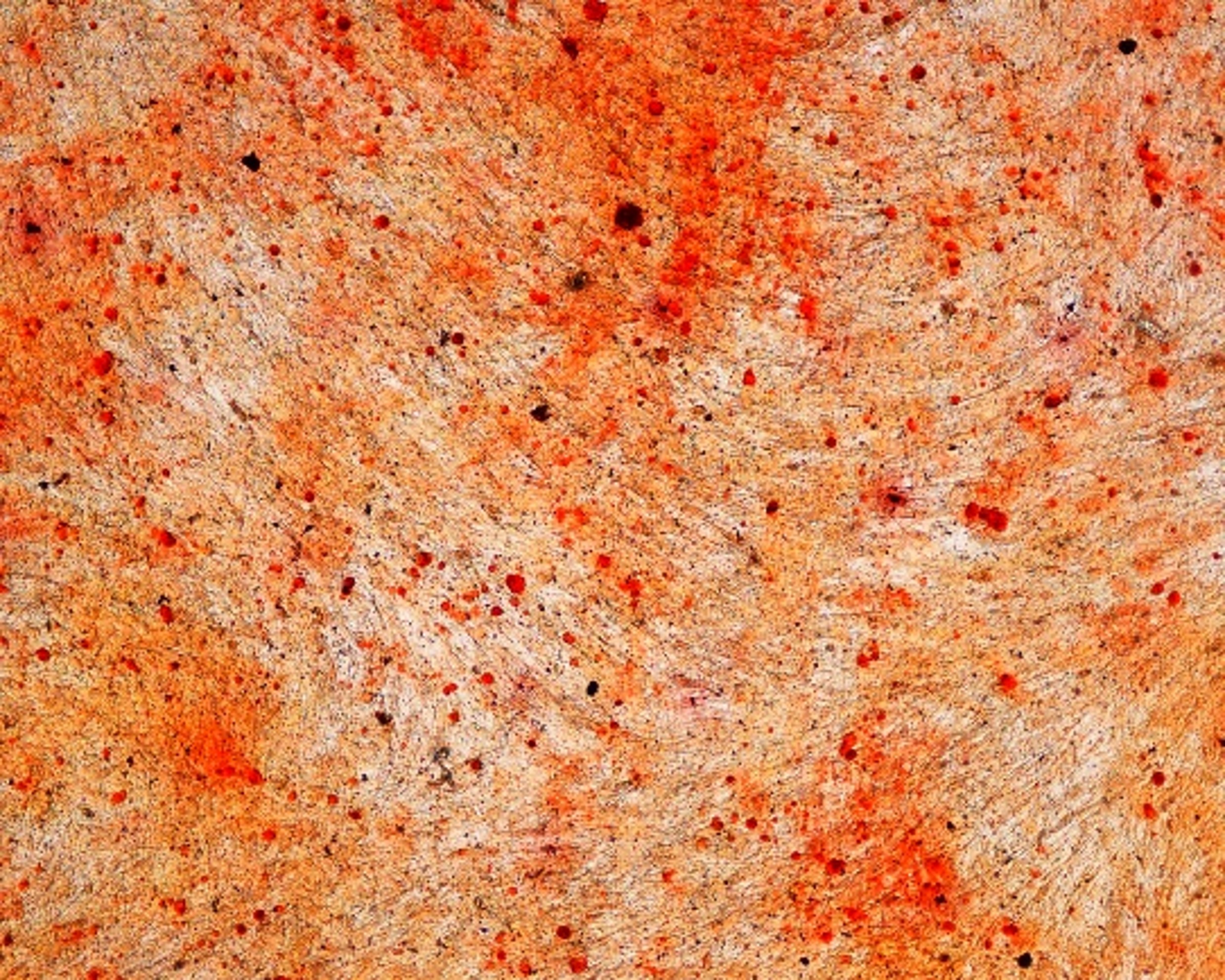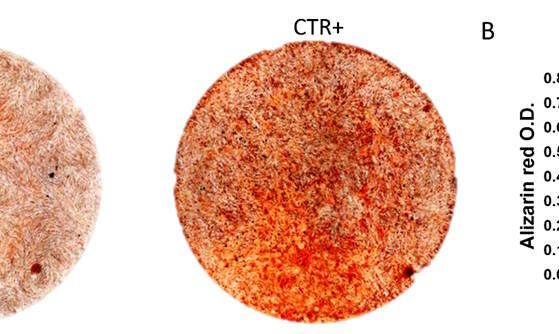From human or animal origin, testing your compounds on osteoclasts can highlight effect on bone resorption

Assess the effect of your compounds on bone formation
Bone remodelling occurs throughout life and this process is carried out by osteoblasts and osteoclasts, which are responsible for the synthesis and resorption of bone, respectively. In order to maintain bone homeostasis, bone resorption and formation must be tightly regulated. An imbalance between osteoblast and osteoclast activity results therefore in skeletal abnormalities. Compounds demonstrating any ability to modulate this balance between resorption and formation of bone are of great therapeutic interest.
We can assess any direct in vitro effects of compounds on human osteoblasts using an in vitro osteoblastogenesis protocol from human bone marrow-derived mesenchymal stromalcells (BM-hMSC).
- The study of compounds effect on osteoblast differentiation can be evaluated by assessing: Alkaline Phosphatase enzymatic activity, type I collagen production (C1CP and P1NP) and cell-mediated matrix mineralization by Alizarin Red staining.
Additional key osteogenic markers can be evaluated by real-time quantitative PCR (RT-qPCR) during osteogenic differentiation at either early or late timepoints.

Evaluation of cells-mediated mineralization after 21 days of culture : BMhMSC were cultured for 21 days before staining for calcium deposits visualization (A). Graph in B shows alizarin red optical density (O.D.). Results are presented as mean ± SD. Statistical differences were calculated with a Mann-Whitney test, *: p<0.05.
From human or rat origin, chondrocytes can be used to evaluate effect of your durg candidate and biomaterial on cartilage regeneration
Check if you compound has a pro-inflammatory effect or an anti-inflammatory effect on macrophages M0 and M1
Osteoporosis impacts bone strength and bone density and current treatment are not sufficient to cure this bone pathology; check our OVX model
Thanks to current capabilities and expertise, our Team can develop specific custom model for in vitro assessment of your compounds and biomaterials